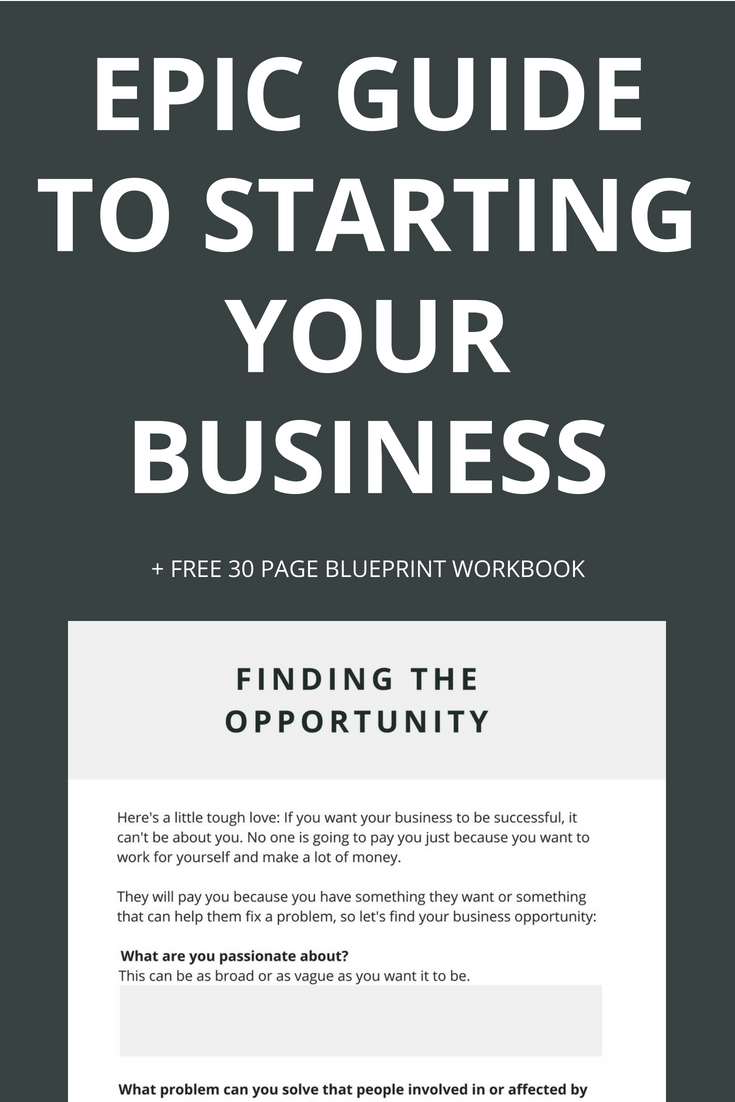Everywhere you look, there are thousandsssss of articles about people making money on the side and dozens of stories about successful side hustlers who got to quit their real job and pursue their side hustle as a career.
I know what you’re thinking… “how do I get my share of that?”
(Don’t worry, I’m not a mind reader or anything, but the fact that you’re here tells me exactly that).
… But how do I start a business in the first place?
… Do I have to quit my comfy job or can I do it on the side?
… And does moonlighting or having a second job count as having a business?
First things first, if you plan to do it on the side, a side hustle is your own business that you work “on the side” of your full-time or regular job.
A side hustle is your own business that you work “on the side” of your full-time or regular job. Click To TweetSo let’s be clear… Starting a side hustle or business is NOT you working for someone else, unless that person is a customer or client of your business.
When you’re working for someone else, it’s considered a part-time or second job.
Sorry Charlie, that’s not what we’re talking about here.
We’re talking about how to create your OWN hustle to generate income for yourself.
Before we get started, this baby is almost 6000 words and goes into CRAZY, insane detail so before you find yourself getting overwhelmed, I created a TOTALLY free blueprint workbook to help you break it down and finallyyyy start your business.
You can get it right here:
[thrive_2step id=’13493′]



Let’s dive in.


Identify the opportunity
Starting a business is not a prison sentence and doesn’t have to be for life but you need to remember that this is a commitment which can last at LEAST 5-10 years.
Plus, if you go into it with the intentions of treating it like a business instead of a hobby, you’ll monetize it faster.
When you think about what to focus your business on, start with your passions.
If you’re like most entrepreneurs, you’ll spend endlesssss hours on your business, so it’s important that you are passionate about what you’re trying to monetize.
… Yes, I know.
There are a bunch of people who talk about “making money in your sleep” and “making money in 7 days with zero time or effort”.
Let’s be real… 99.99999999% of the time, you’re going to have to put in work AT LEAST in the beginning.
In fact, you’ll have to put in A LOT of work.
As your business grows, you’ll be able to streamline and find leverage so you don’t have to be involved in every part of the business, but in the beginning, EVERYONE puts in work.
Do yourself a favor and make sure you pick a business you actually enjoy.
This can be anything.
That’s right…
ANYTHING.
From skydiving to painting water colours, there is a business waiting to happen.
… but there’s a catch.
In order to get people to spend their money with you, you have to offer something they want.
Your business isn’t ALL about you if you want to make money.
Here’s how to balance the two:
Figure out what you’re passionate about and then find a problem that you can solve with your passion… and voila.


You, my friend, have found your niche.
Then, start asking yourself what problems you can solve in that niche.
At one of our most recent workshops, one of the attendees was telling us how ridesharing drivers leave a ton of money on the table and his business will focus on educating them about how to grow their income.
Boom. That’s an opportunity.


Choose your business model
By now, you have an idea of what type of business you want to do… but how will you solve the problem?
It comes down to two decisions:
- Online or In Person
- Products or Services
I know, I know, you want to do it alllll.
Stop. Right. There.
You CAN do anything but you can’t do everything.
If you want to monetize quickly, you’ve got to focus and simplify… and that starts with your business model.
Here at Millennial Empire Builders, we’ve got some leverage in the form of powerful systems and incredible talent so we have multiple streams of income, but it didn’t start that way.
As you grow and gain leverage in the form of systems, automation and incredible talent, you can add more streams of income to continue to grow your business… but don’t go adding twenty different streams of income until
you’ve monetized the first, automated it and established your foundation.
Chasing multiple streams of income will distract you in the beginning and might even leave you overwhelmed to the point of inaction.
Keep it simple.
Let’s break it down…
Online + Products
If you’re planning to sell products online, start by deciding if you want to sell an info product or a physical product:
Selling Info Products
If you have skills that other people want to learn how to do, you can package it as a training and sell it online with a site like Teachable or Podia.
That model is incredibly effective if you already have an audience, have the time to build an audience or have money to spend on generating traffic to your sales page.
Kristen over at Hello Nutritarian does an INCREDIBLE job of helping people elevate their lifestyle by adopting the Nutritarian diet.
Basically, it’s a variation of the vegan diet that really puts a heavy focus on eating tons of fruits and veggies.
She sells an ebook that gives people a step-by-step walkthrough for adopting the lifestyle change… and I even bought her ebook because her site was so informative and well-organized.
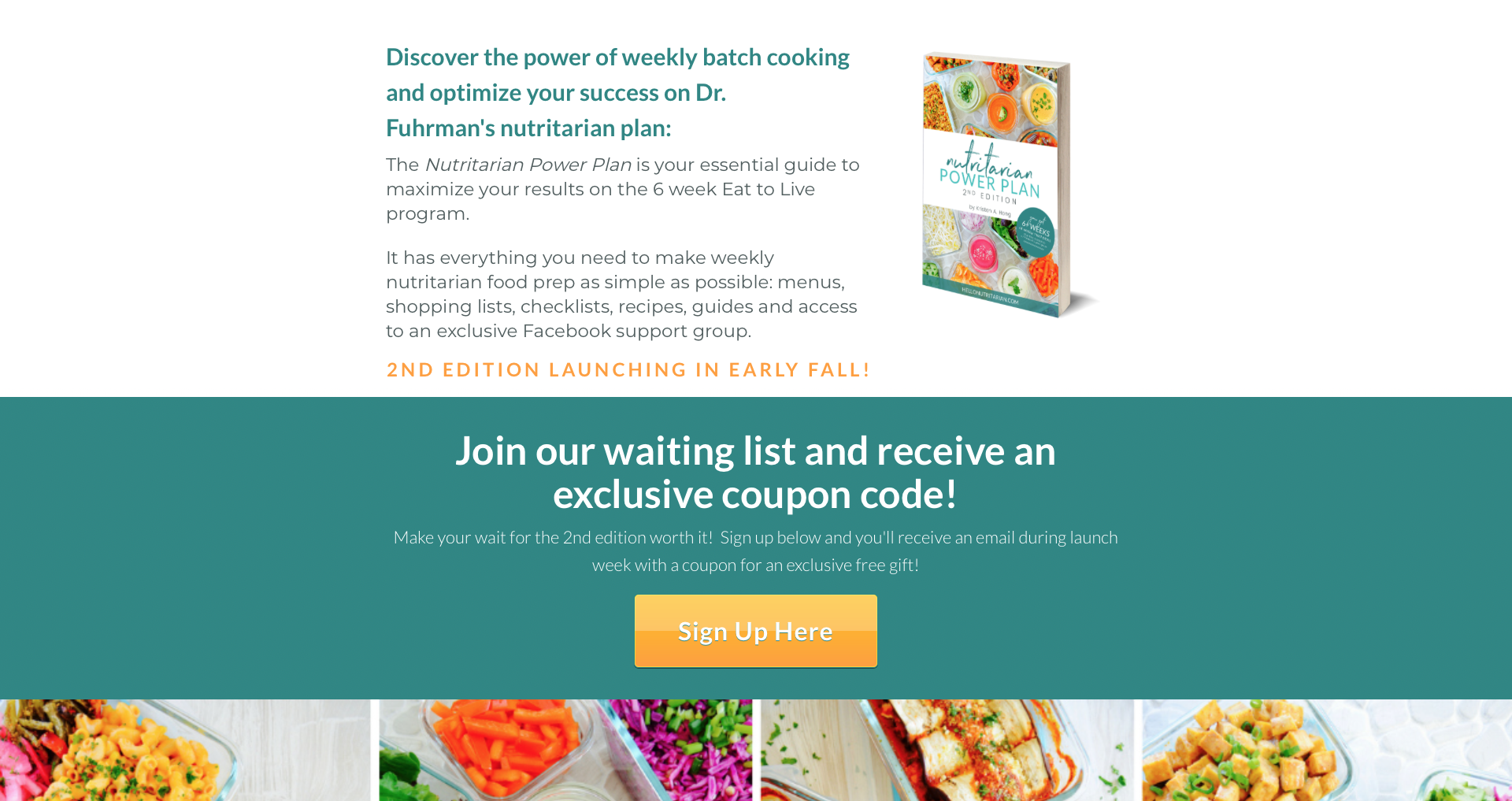

Selling Physical Products
If you have products that you want to sell, you can create your store through a platform like Shopify, Etsy or Amazon and get to selling.
Sites like Printful make it easy to sell print-on-demand products like shirts, mugs and a million other things.
What’s cool about them is that you don’t have to carry any inventory — you simply upload your design and start marketing your product.
As people order your product, Printful prints the design, ships it and you get paid. Easy peasy.
Similarly, you can also go the dropshipping route with Shopify + Oberlo.
Alex Tooby started an Instagram account called Men & Coffee which was just that… beautiful men drinking coffee.
She grew the account to 350k+ followers in about a year and now has an online shop with coffee related gear.


Either way, whatever you decide to do, start simple and focus on solving the pre-defined problem in your niche or opportunity while you’re starting out.
You can always grow later.
Starting simple will get you to actually start.
Online + Service
Maybe products just aren’t your thing and you’re looking to market yourself instead.
Here are a few different options that are considered online services:
Membership Sites
If you have an audience already, building a membership site is an incredibly powerful way to create brand loyalty, drive engagement with your audience and scale your business faster.
Our Empire Builder Academy is the central hub for our members and has been essential to helping us grow our organization.
We help millennials grow their businesses and create extraordinary lives.
We built the membership site on Podia in the name of starting simple and we’re getting ready to completely rebuild the academy from the ground up on our own self-hosted site.
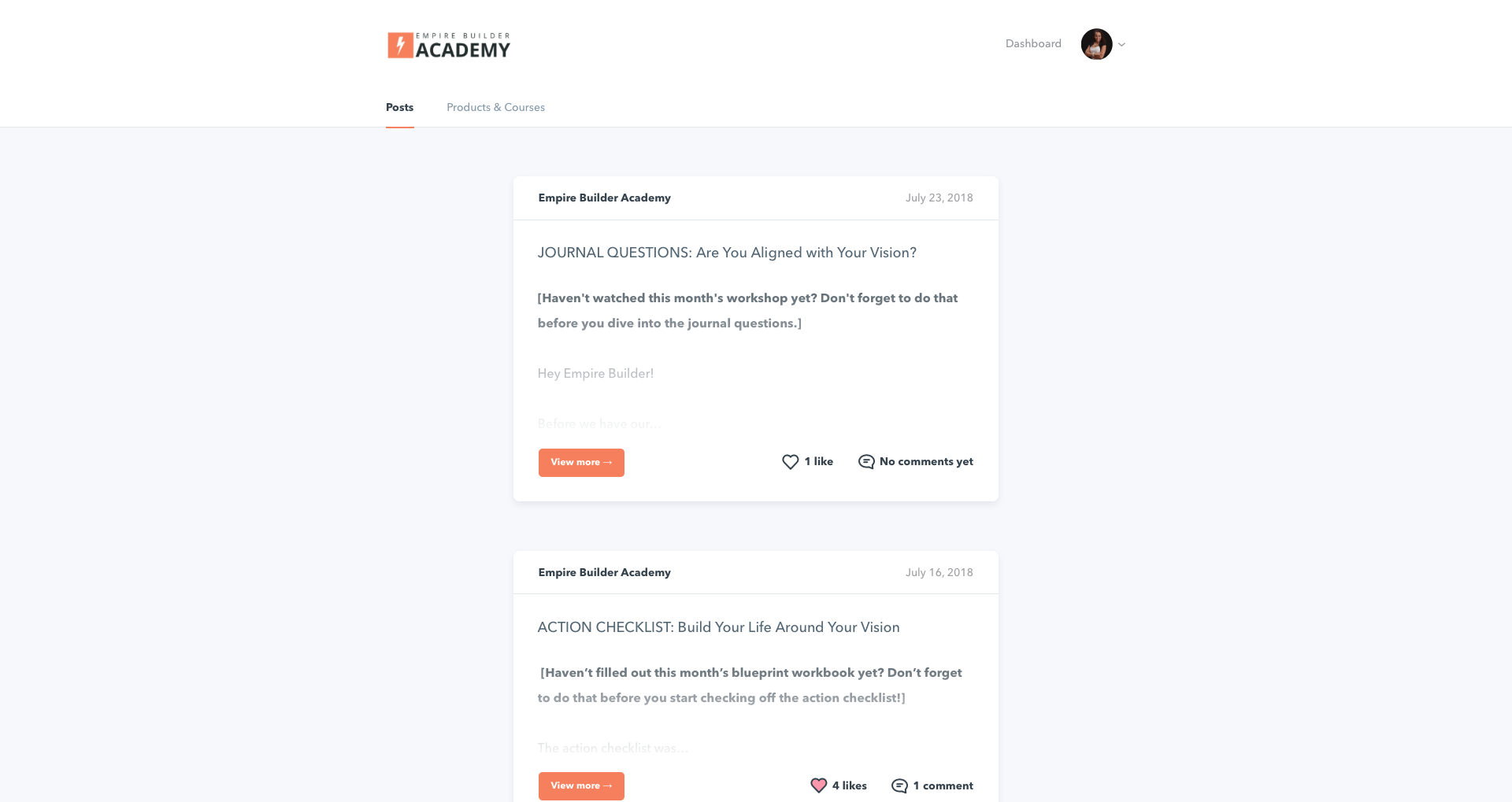

Freelancing
If you have a marketable skill that you can offer as a service, freelancing is the way to go.
Sites like Freelancer.com, UpWork and Fiverr are an incredible place to start advertising your services and growing your client base.
Using their brand DNA method, Julie and Samantha from Ideal Marketing create a 90 day done-for-you calendar of instagram posts to help you grow your business.
Samantha’s specialty is the visual imagery while Julie’s specialty is the copywriting… and they are genius at what they do.
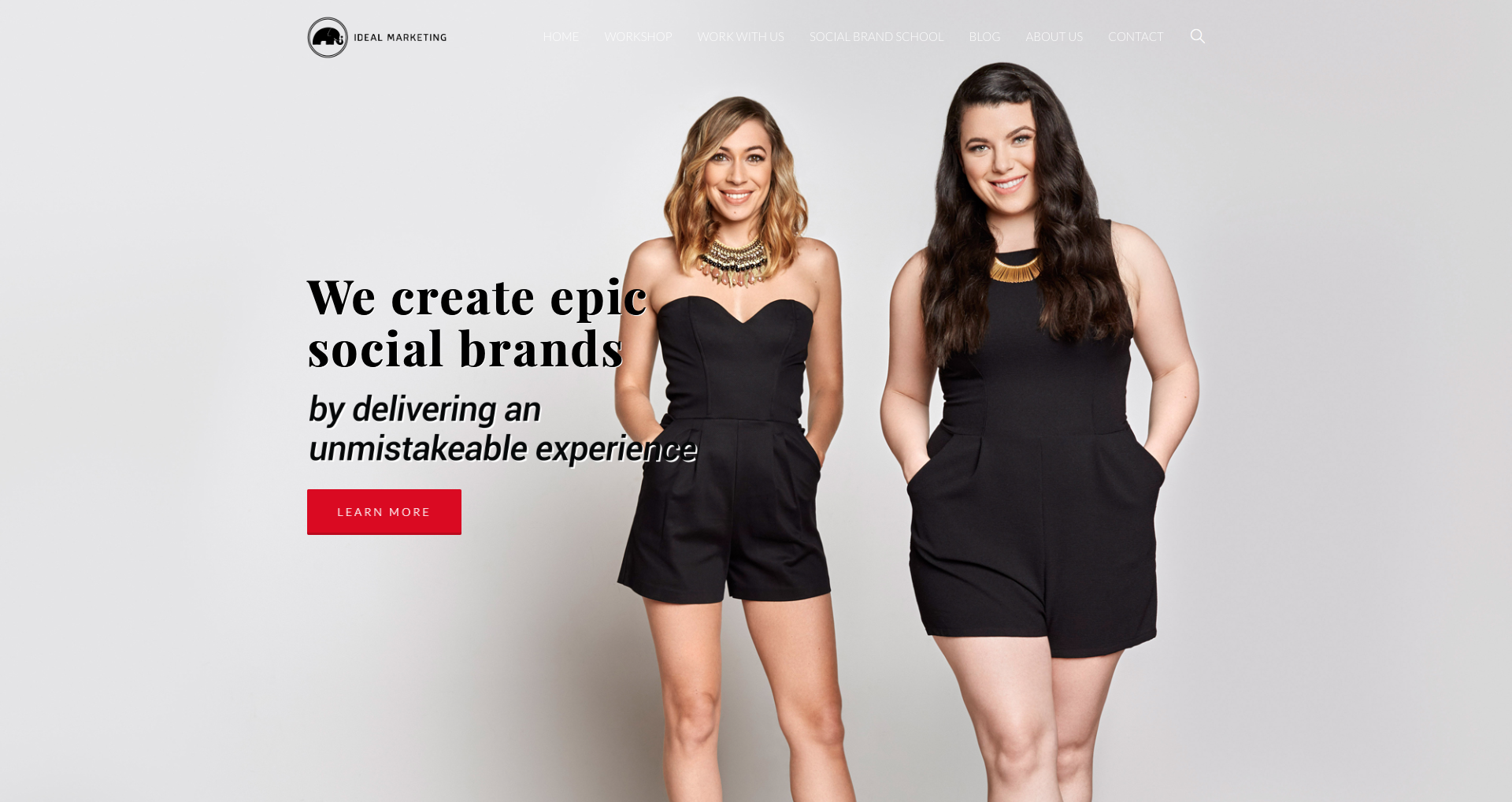

SaaS (Software As A Service) and Apps
I’m not going to dig really deep into this because building software or an app either requires lots of skill or lots of money.
If you do have one of those things however, building that out and offering it as a service can be EXTREMELY lucrative.
I was recently introduced to MassCast, an app for people to compete for personal records in the gym.
The app is still being developed, but I love the concept so I wanted to share it here… Basically, you record yourself doing a specific type of lift and you compete against other people in the same weight range and the same gender as you and you can win prizes.
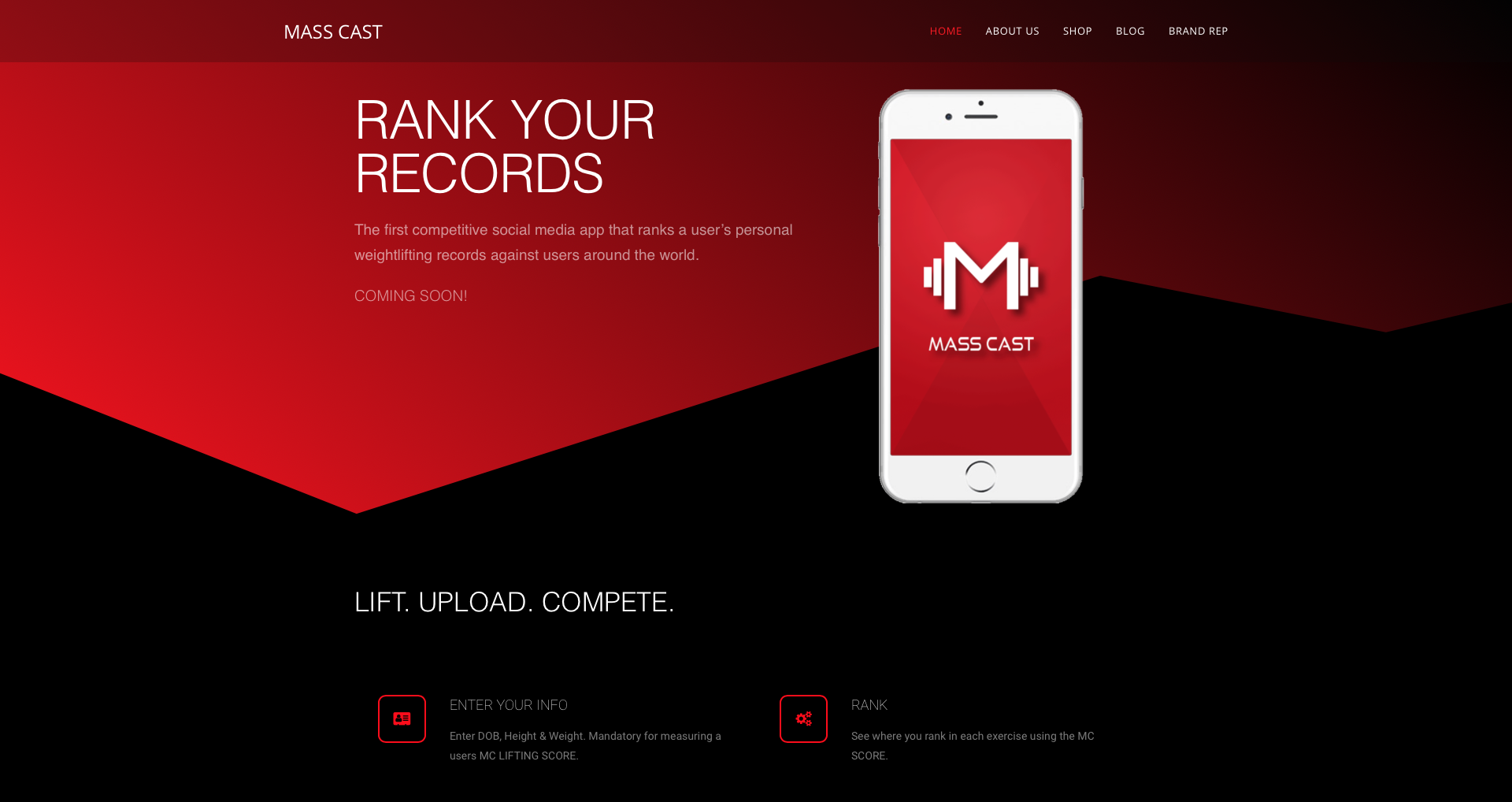

Coaching and Consulting
After you’ve started seeing some success, it’s only a matter of time before people start asking you to help them do the same.
Seneca Williams, one of our members and one of my clients is a mental health counselor for women.
Her entire practice is done online where her clients can book their appointments, pay her and everything else through her online portal.
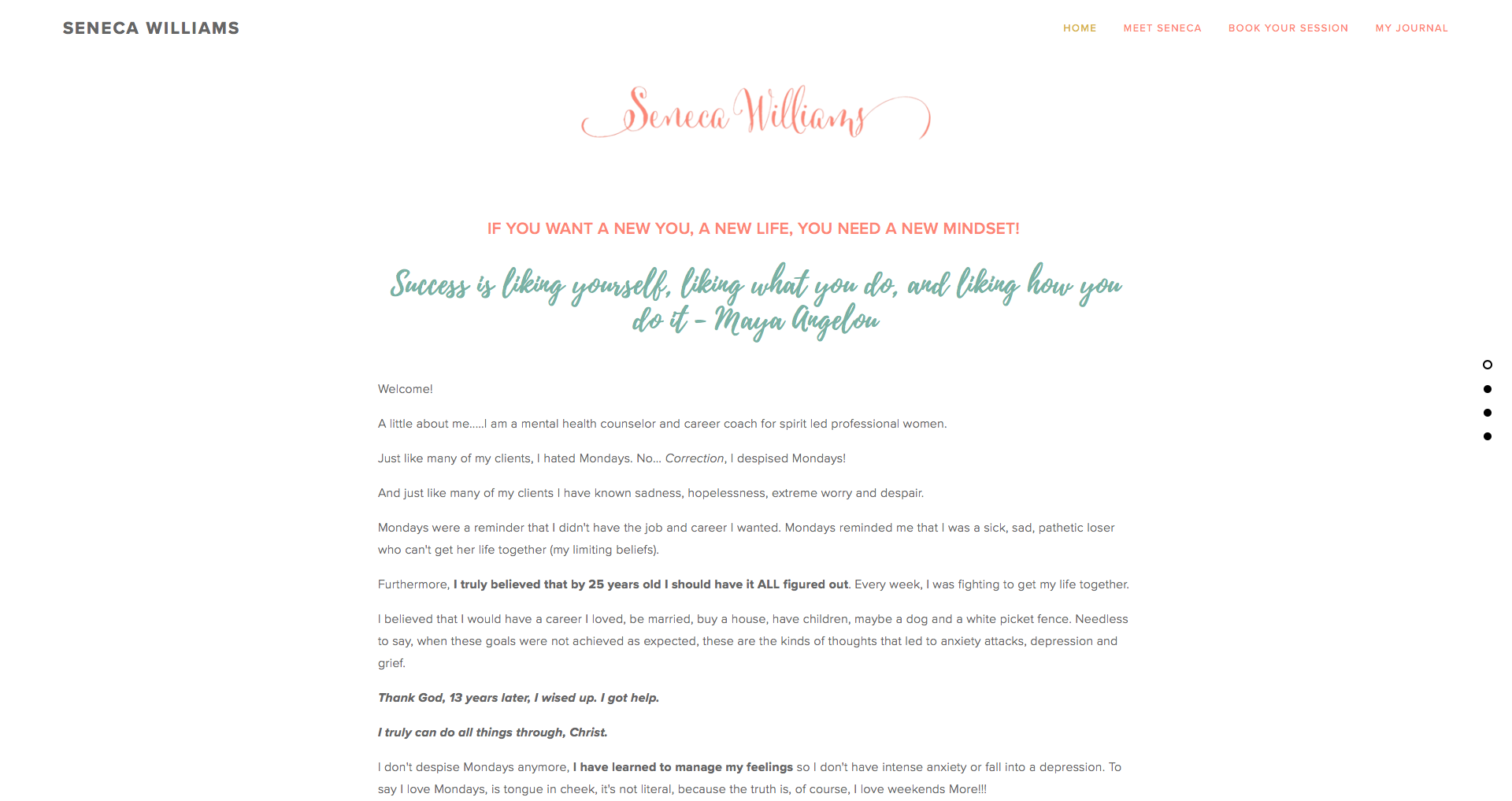

In Person + Products
You can literally sell anything from lemonade to private jets and if you have to actually talk to the person, it falls under this category.
By day, I sell real estate over at Happy Homes.
Most of my nurturing and follow up happens online but when it comes down to it, I still meet them in person to help them buy and sell their homes.
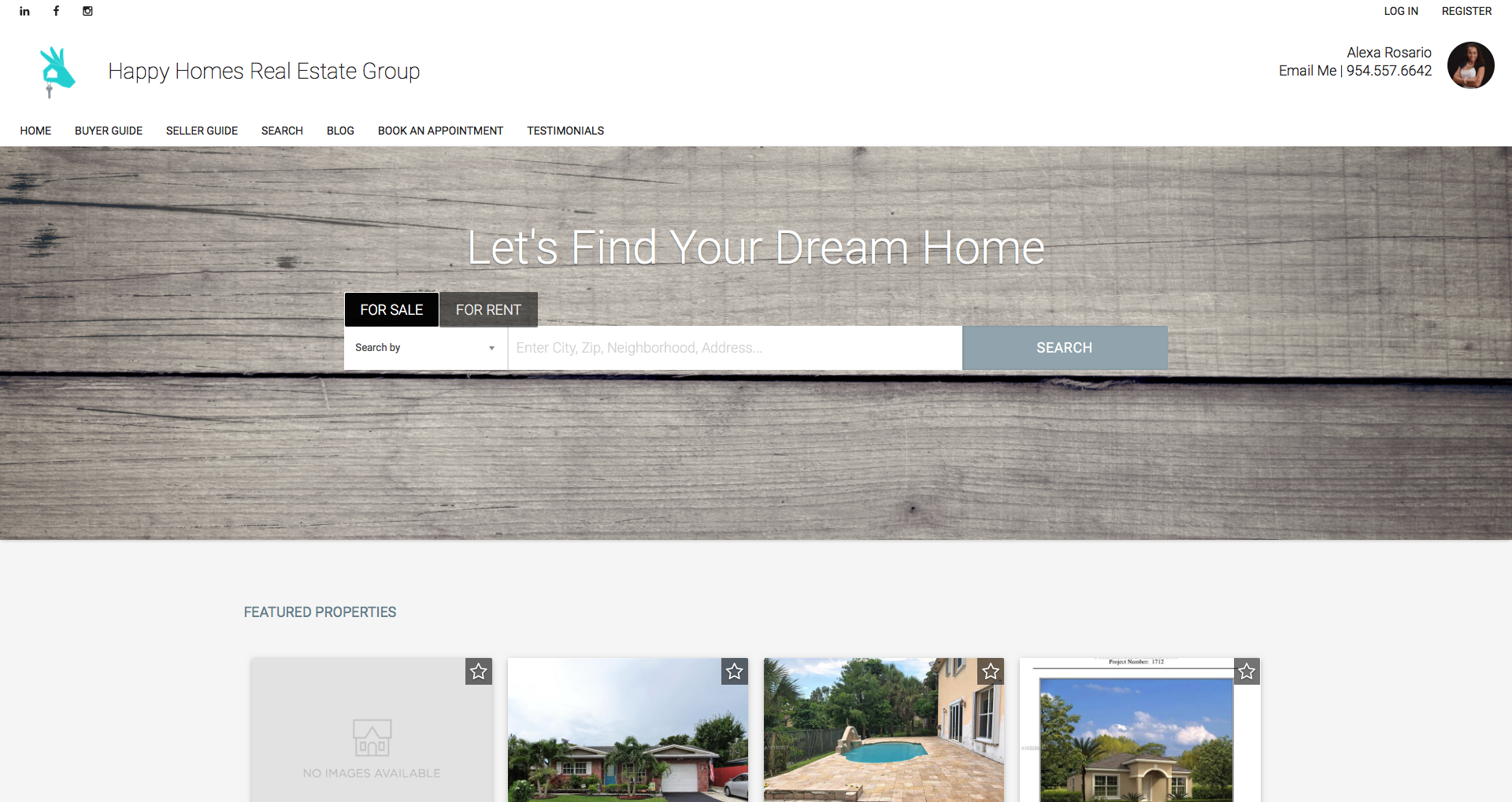

In Person + Service
Have a skill that you want to work with people in person?
Maybe you’re a personal trainer, tutor or massage therapist… All of these can be turned into a business.
Here’s a good friend of mine, Ben Azadi from ShredFat who is a personal trainer and former owner of LiveFree Crossfit.
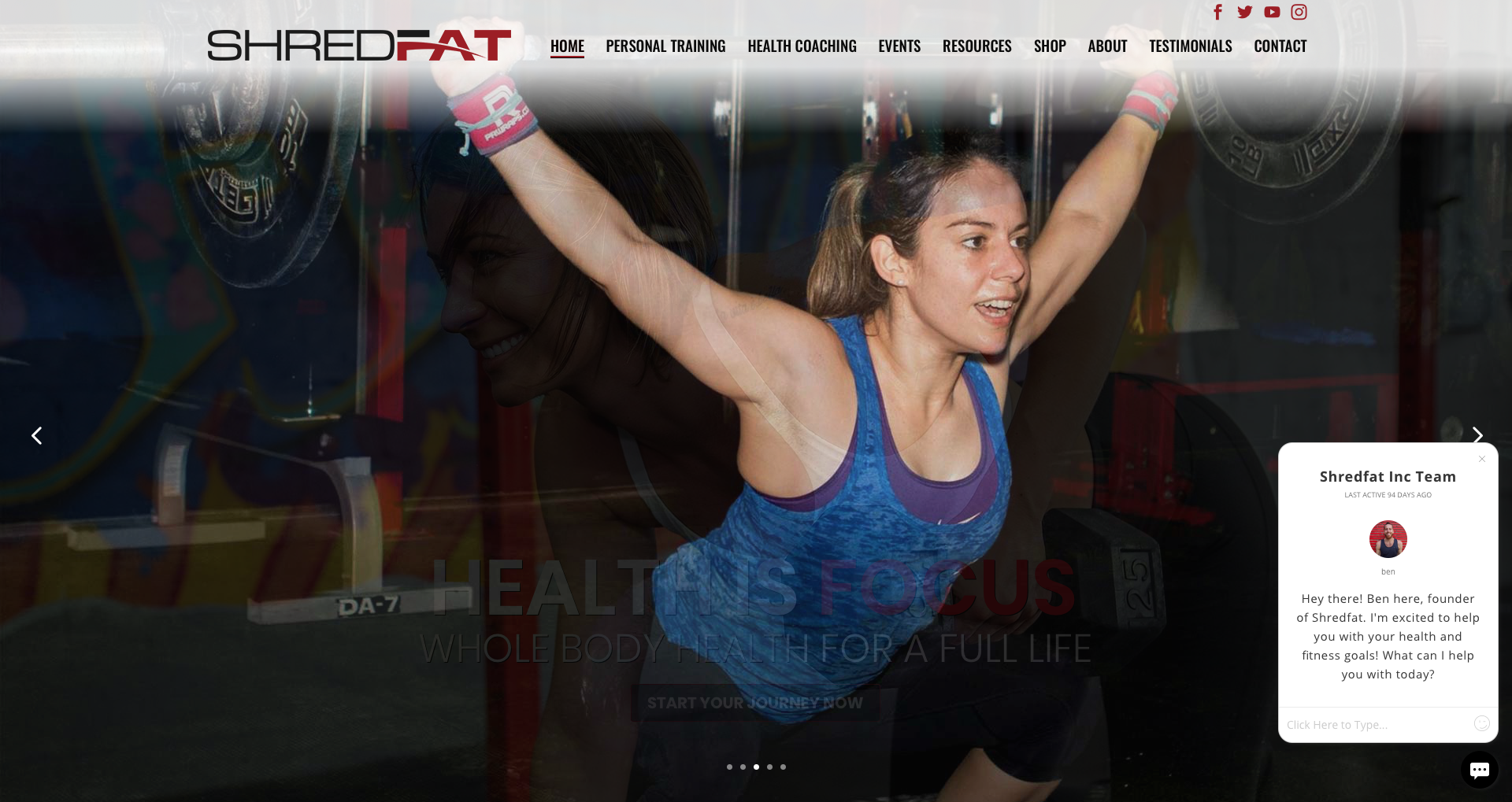

If you’re stuck…
Talk to people who are already running a similar business to what you want your business to be.
You’ll be AMAZED by how open other entrepreneurs and business owners are when you start asking about their business and you’ll find ways to collaborate together.
Believe it or not, collaboration will make you infinitely more money than competition.
Surround yourself with other like-minded entrepreneurs for brainstorming and support for one another.
In fact, even if you AREN’T stuck, I HIGHLY recommend you start making friends with other influencers in your niche.
Don’t forget to download the free workbook to put allll of this into action:
[thrive_2step id=’13493′]





Create Your Offering
Once you’ve decided HOW you want to offer your product or service, you’ve got to package it and wrap it in a pretty bow.
When you’re starting out, you want to launch with a minimum viable product (or MVP for short).
Yes, you read that right… Minimum.
Since you’re an empire builder, you’re used to being an overachiever so this is going to be a tough pill for you to swallow.
You are going to launch with the absolutely bare minimum product or service.
Why?
Because you’ll actually start.
… and as you grow, get clients and learn new skills, you’ll refine and pivot.
No one ever wants to hear that because they see these influencers who are killin’ it in their niche and they want to be just like them… but they forget that they started out like everyone else.
In fact, my favorite beauty influencer is Desi Perkins (sorry guys, stick with me for a second because I do have a point!)… I love love love the fact that she almost always goes for the “natural glam” look AND we wear the same foundation shade so whatever looks good on her will probably look good on me too.
For the sake of this post, I actually scrolled down to the bottom of her instagram to see how much she’s grown and changed in the past few years and it’s mindblowing.
Here’s how her Instagram started way back in January 2012…


… and this is how her Instagram looks now:


She now has 3.7M followers and basically jet sets around going to events… all because she started.
While Instagram definitely isn’t a reflection of how well someone is doing in their business, I figured her Instagram was a super easy way to visually demonstrate progress and the power of JUST starting and how much her style has changed over the last six years.
It doesn’t have to be perfect, it just has to be good to start out.
Let’s find your MVP to start with…
If you’re offering services…
One of the biggest mistakes that I see new entrepreneurs make is they call themselves a coach, consultant or freelancer and when people ask about their services their answer is, “it’s different for all of my clients’.
I don’t care if you specialize in one thing or are good at 20 things…
You have someone’s attention for 0.0000002 seconds, so make the best use of it and get crystal clear with what you are offering and how you price it.
I truly believe that when you’re starting out, your ability to articulately talk about your products and services is the difference between gaining someone as a customer or client and getting lost in the back of their mind.
There are mixed reviews about whether or not you should include pricing on your marketing materials and I truly believe that it depends.
Since we’re specifically talking about getting clarity on your offering, I just want to bring your attention to Ali the Happy VA and Caressa Lenae because of how crystal clear their offerings are.
I’m using both examples because one includes pricing, the other doesn’t and either way, their offerings are crystal clear and beautifully presented.
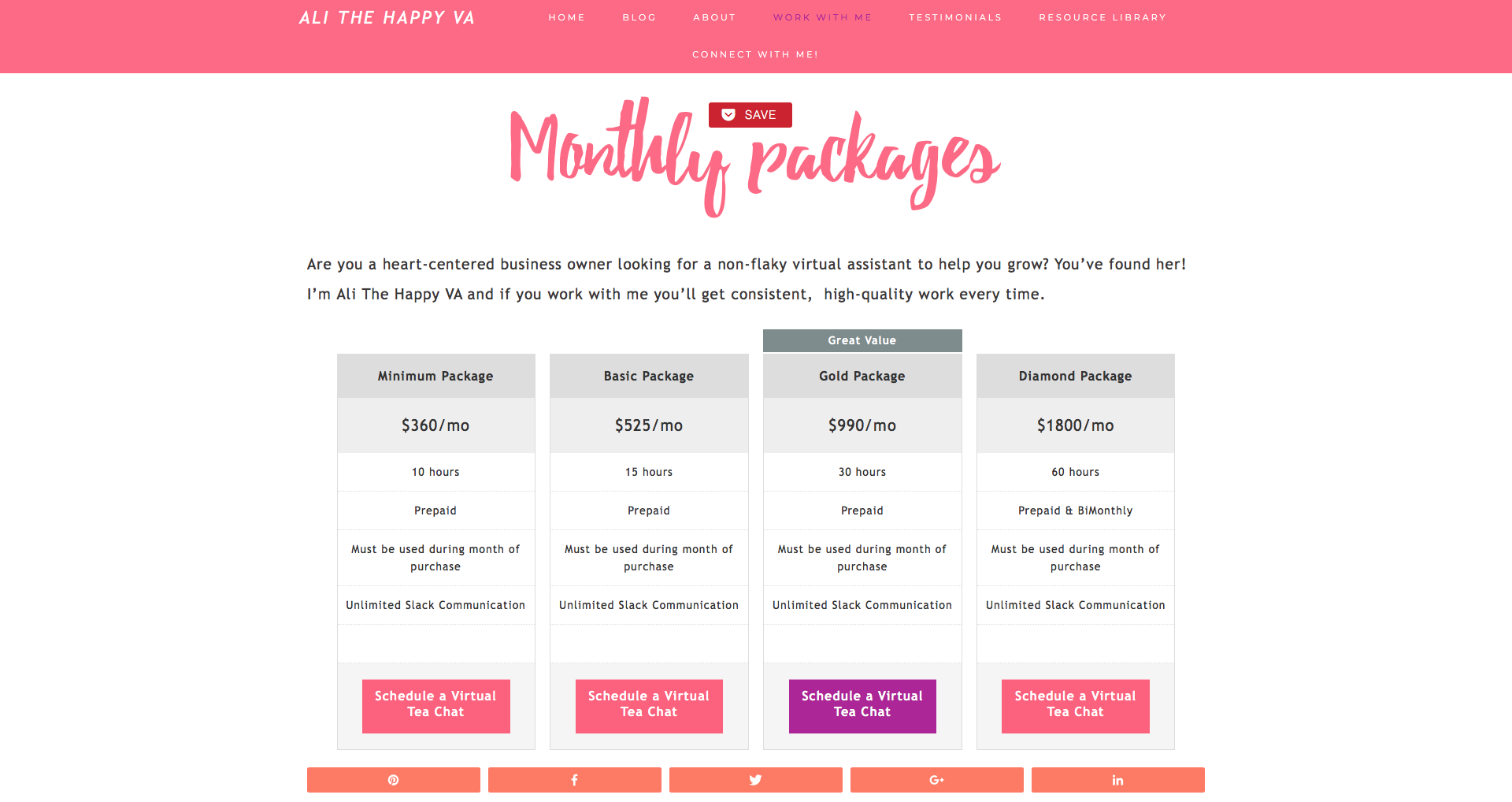

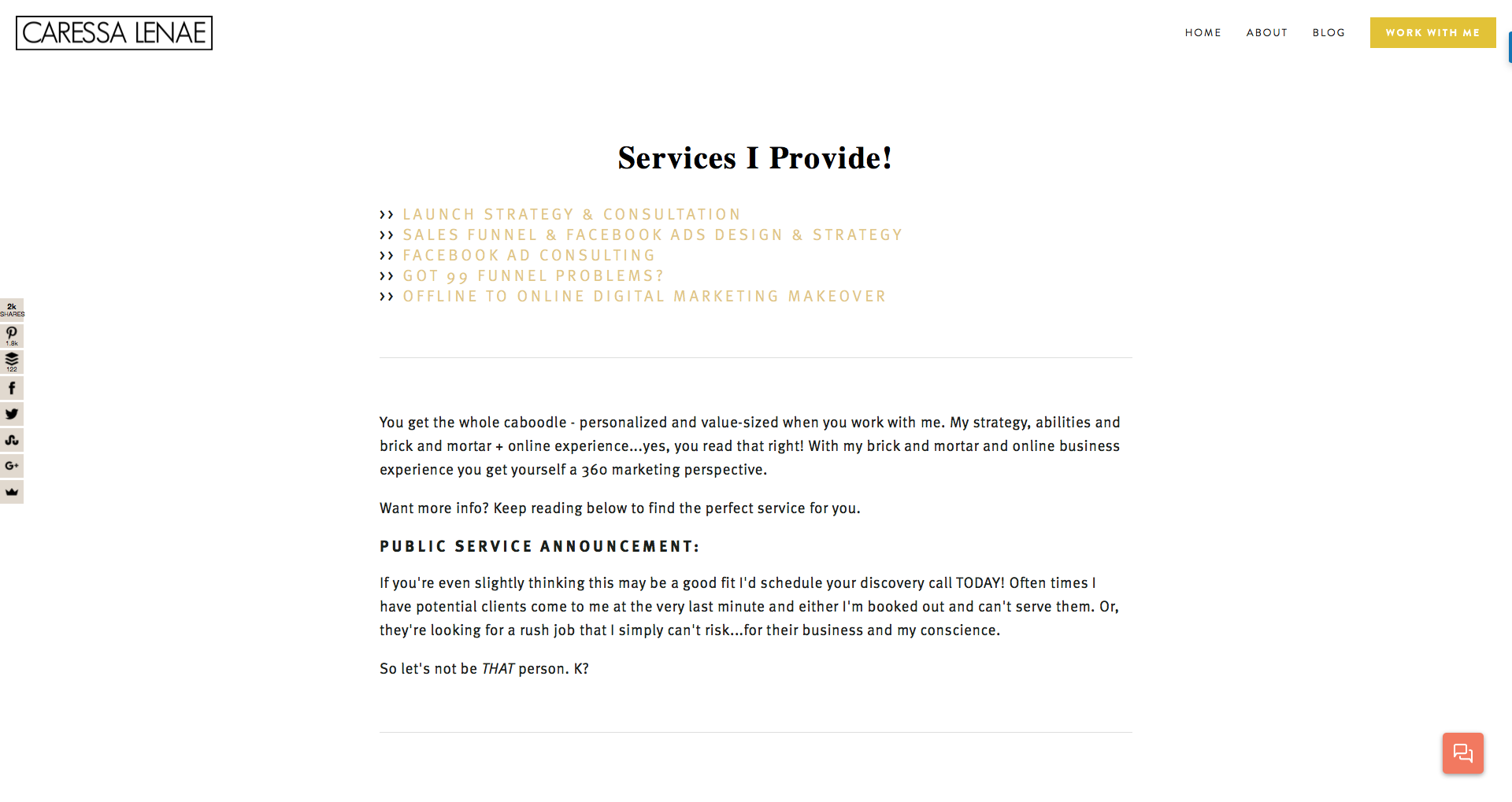

Whether you decide to include pricing or not, be crystal clear with what you offer.
Both of these women are virtual assistants and are clear about what they do, what they offer and how they can help you.
Don’t make people think harder than they need to in order to work with you!
Don't make people think harder than they need to in order to work with you! Click To Tweet
If you’re offering products…
You’ll need to know where you’re sourcing your products, how you’ll package and deliver your product.
Whether it’s a digital or physical product, the delivery method totally matters… because there’s nothing that will kill your reputation faster than when people are spending money with you and you drop the ball… You’ll have scammer written all over you in a hot second.
Most eCommerce platforms offer the ability to deliver digital products automatically and GumRoad is by far the most popular or you can tap into the power of Amazon and sell ebooks through their platform.
Dessary, one of my friends from college has an incredible Etsy shop called Paint Me Peculiar where she leverages her passion and talent for art to generate her income.
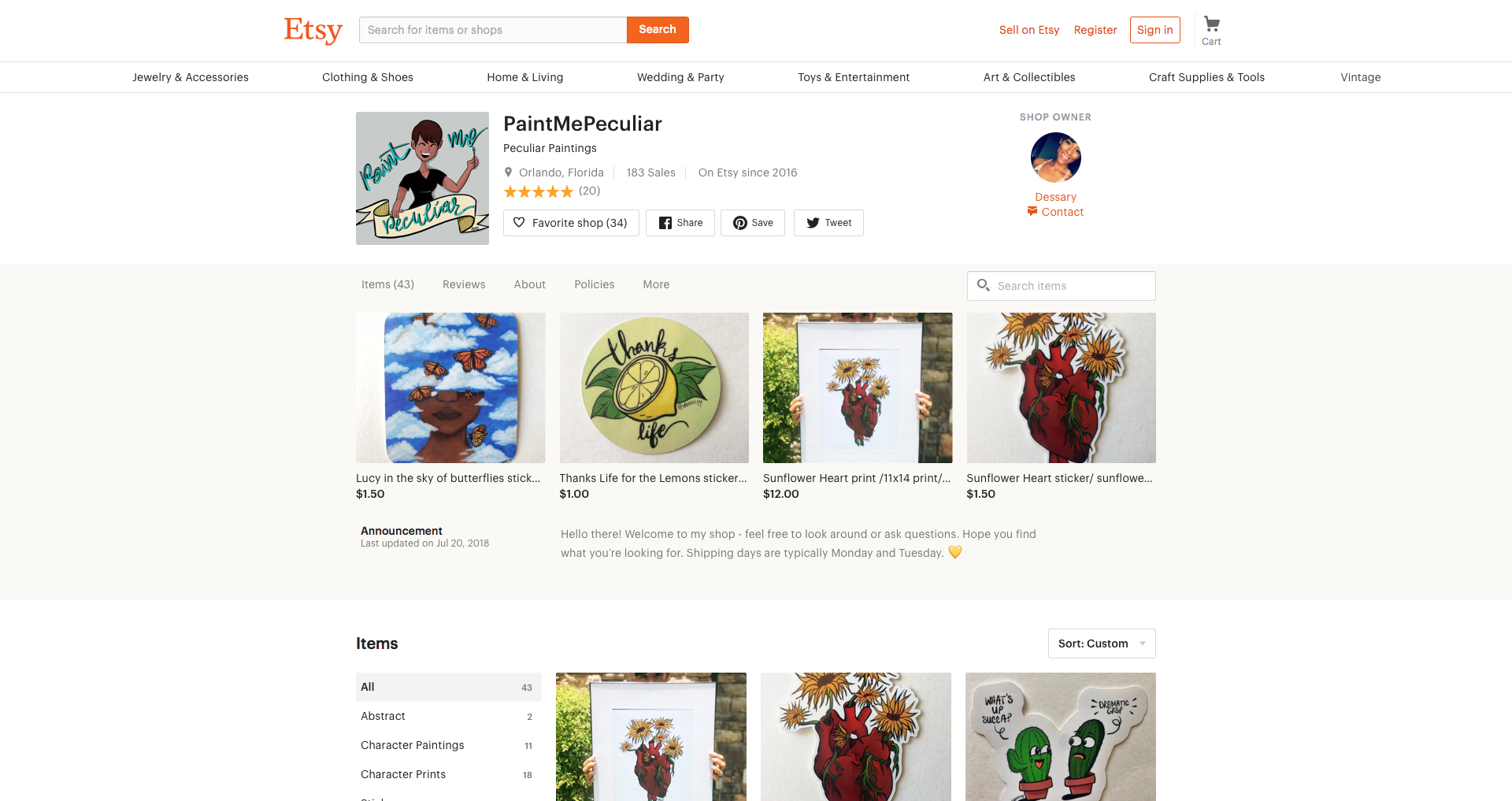

If you’re drop shipping or taking the print-on-demand approach, all of that will be taken care of for you… but if you’re custom creating them, you might have to manually package and ship them. Either way, you’ll want to figure out the logistics of delivering your products before the orders start rolling in.
It doesn’t have to be perfect while you’re starting… Just start.
Don’t get stuck here.
Start… You can keep refining as you go.


Cover Your Ass
I’ve ALWAYS been interested in entrepreneurship, even before I knew what the word actually meant.
I remember sitting in my mom’s office while she was working and I’m pretty sure my first professional lesson came before I was allowed to say bad words and she taught me ‘CYA’.
Don’t underestimate it because it’s one of those things where you may get away with it but if and when it catches up with you, you’ll be wishing you had.
Here’s my disclaimer: I’m not an attorney or an accountant, so I highly recommend you go do your own research and find one to help you set all of this up but I’ll give you the basics:
Register Your Business
Do you need to register your business to start making money? No.
… but you should.
Among the many reasons, in step 8, we’re going to talk about building your business with scale in mind.
If you plan to build a business beyond you, you might as well do it right the first time.
There are various ways that you can incorporate your company…
Again, if you’re not sure what type to use, talk to an attorney or do your research.
The most popular are: limited liability company (LLC), corporation, nonprofit or a sole proprietorship.
This article from the Small Business Administration will direct you to the right place to register your business with your state.
Get Your Tax ID Number
Your tax ID number (or employer identification number, or EIN for short) is like a social security number for your business.
It’s what you’ll use to file taxes, open your bank account and some of the companies you decide to work with will ask for it.
Getting your EIN takes all of 0.02 seconds and you can do that with Uncle Sam right here.
Open Your Bank Account
Uncle Sam doesn’t like when you mix business and pleasure so you’ll want to open a bank account.
You’l want to talk to your bank about the best option for your business.
… buttttt if you’re like most millennials and don’t feel like going through that whole process, Novo is a digital bank for businesses that uses AI to help you make better business decisions.
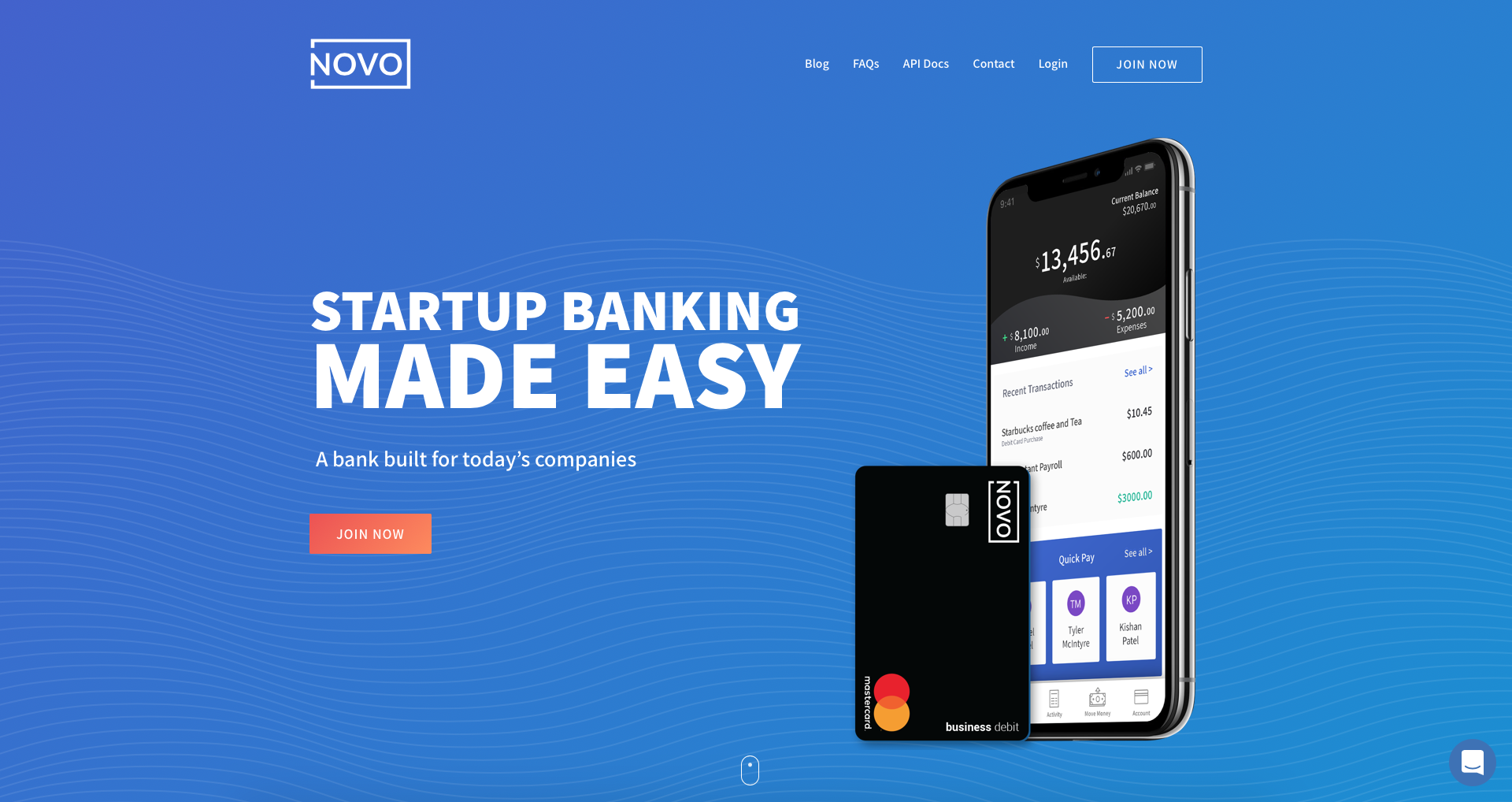

Protect Your Assets
After allll the hard work you’ve done, make sure that you protect your assets, ideas and everything else:
Get Insured
We live in a sue-friendly country where people are regularly looking for a way to make a quick buck… and often times at the expense of someone else.
Because I’m not licensed to talk about business insurance, you should talk to someone that does know what the best policy for your business is.
If you’re looking for an online option, you can check out CoverWallet.


Protect Your Intellectual Property
Basically, if you come up with an idea or design that you don’t want someone else to use, you should protect it.
It’s a little more intensive than that but that’s the basic idea.
There are four types of protections for your intellectual property (all of these summarized descriptions are from this article on UpCounsel who also has a ton of other useful links and articles in the post):
Patents: A patent gives you the right to make exclusions on other people to make, sell or use your invention. There are a bunch of different kinds of patents including utility, software, design and plant patents. You get a patent by filing a patent application with the U.S. Patent and Trademark Office (USPTO) and if you want to check to see if there’s already a patent similar to yours, you can check Google for patents here: www.google.com/patents
Trademarks: A trademark is a word, phrase, symbol, or design that distinguishes the source of products (trademarks) or services (service marks) of one business from its competitors. In order to qualify for patent protection, the mark must be distinctive. For example, the Nike “swoosh” design identifies athletic footware made by Nike. Before receiving approval from the USPTO, companies and people can use the TM symbol to indicate ownership of the mark. Upon approval, you can legally add the registered trademark symbol (®) to your mark. The TM symbol doesn’t hold any legal weight, but it can indicate to other businesses or people in your industry that you intend to claim the mark.
Trade Secrets: A trade secret is a formula, process, device, or other business information that companies keep private to give them a business advantage over their competitors. Unlike the other types of intellectual property, you can’t obtain protection by registering your trade secret. Instead, protection lasts only as long as you take the necessary steps to control disclosure and use of the information. Businesses use nondisclosure agreements, restricted access to confidential information, post-employment restrictive covenants, and other security practices to maintain trade secrets.
Copyrights: Copyrights protect original works of authorship, such as literary works, music, dramatic works, pantomimes and choreographic works, sculptural, pictorial, and graphic works, sound recordings, artistic works, architectural works, and computer software. With copyright protection, the holder has the exclusive rights to modify, distribute, perform, create, display, and copy the work. In order to qualify under copyright laws, the work must be fixed in a tangible medium of expression, such as words on a piece of paper or music notes written on a sheet. A copyright exists from the moment the work gets created, so registration is voluntary.


Launch Your Business
I don’t have kids yet but if bringing a tiny human into this world is anything like I expect it to be, launching your business feels the same way.
It’s equally terrifying and exciting… at the same time.
… and wayyyyyy too often, would-be entrepreneurs keep pushing off their launch until it’s perfect because they’re afraid to fail.
Here’s what I’m here to tell you:
The only person that will actually REALLY care about your launch is you.
I know, that’s tough, but it’s the truth.
One day your product or service isn’t there and the next day it is.
Until you start getting in front of potential clients and converting them, you’ll never know if everything is perfect.
That means the 2920830394 hours you spent on designing the perfect logo and flyer aren’t as important as you think.
Making your blog beautiful before you hit launch isn’t helping you.
Sure, all of that will help with conversions, but in order to test that, you have to actually, y’know, test it with real live people (ahem, that means you have to launch).
So, let’s talk about how to get attention for your new business and how to convert your prospects into actual paying clients.
Messaging
Notice I said messaging, not marketing.
Marketing is “look why I’m awesome”.
Messaging is “you have a problem that I can help fix”.
It doesn’t sound like a huge difference but when you tap into psychology, our brains hear them TOTALLY differently.
Human nature makes us inner-focused so we worry about our own problems and the thoughts that are going on in our own mind… Even when we’re helping, we’re helping because we WANT to, not because someone else wants us to.
You can cry and stomp your feet about how selfish and unfair that is all you want, but until you accept it, you’ll always be frustrated with messaging.
I feel like I’ve probably beat a dead horse on this subject, so I’m just going to refer you to the other posts I’ve written about creating your messaging:
[thrive_leads id=’11811′]
We also have a workshop in our Empire Builder Academy about how to write copy that sells, if you’re interested:
[thrive_leads id=’13257′]
Sales Page
Next up, as you start getting people curious about this new thing you’re doing, you’ll need to have somewhere to send them.
You don’t necessarily need to have an actual sales page on a website, but you’ll need to have a way for them to get more information and pull the trigger to work with you.
Your sales page needs to be more than “my product is awesome so you should buy it”.
The sales page should tap into your ideal audience’s pains and then show them you can overcome those with your product or solutions, and be sure to offer tons of social proof about how your product or service has made a difference in people’s lives.
If you don’t have (or want) a full website, I highly recommend using a platform like LeadPages to build your new sales page.
Driving Traffic (or Attention)
I have a question for you…
If you launch your business and no one knows about it, did the launch really happen?
Instead of worrying so much about making everything perfect, focus on how you’re going to get your new business in front of people.
(and you already know what I’m going to say… You’re going to say something stupid, stumble over your words at the beginning and mess up… but it’s part of the process).
Lack of credibility is only temporary so your goal isn’t to avoid that awkward phase… Your goal needs to be to get through it as quickly as possible.
Whether you’re promoting your business online, by word of mouth or otherwise, you’ll need to have a lead generation strategy.
I could probably write an entire article about each of these strategies, but for the sake of the length of this post, we’ll just list them out…
You can generate leads with social media, networking, ads, door knocking, blogging and a million other ways.
The key point to remember is this:
If you want to sell more, talk to (or interact with) more people.
If you want to sell more, talk to (or interact with) more people. Click To Tweet
Checkout/Onboarding Experience
Once they hit that buy now button or submit that intake form, what happens next?
Your process should be as streamlined as possible so that it’s easy to work with you.
Want better reviews, higher paying clients and more referrals? Help them reach their goal and be easy to work with.
If you’re offering services…
Once they hit that submit button on your intake form, streamline your process as much as you can.
If your service is something like a membership site or the interaction is in a group setting, a welcome email sequence will suffice.
However, if your service is more of a one-on-one experience, things can get a little deeper.
At the risk of overwhelming you, I wrote an entire post about how to automate your onboarding process…
[thrive_leads id=’13219′]
If this is your first rodeo, I highly recommend that you keep it as simple as you need to so that you can keep moving forward without getting overwhelmed.
True story: I recently started taking on consulting clients to help them streamline their businesses.
I’m like the queen of systems and I literally have a system for ev-er-y-thing.
Soooo, when the first person said, “I want to hire you as a consultant”, we were emailing back and forth and pretty much everything took a million times longer than I expected because I didn’t have systems in place.
Since then, I’ve streamlined the whole process using the outline I mentioned above and everything works more smoothly now.
If you’re offering products…
The biggest mistake that you can make when someone purchases from you is that you never connect with them again.
Do they get a thank you email after they purchase?
Maybe a discount offer?
Ensuring that you KEEP their energy high after they purchase your product will make it a million times easier to secure them as a repeat client.
Ready to get to work?
Make sure you download your free 30-page business planning blueprint workbook right here:
[thrive_leads id=’13498′]


Start Generating Revenue
Until you start generating revenue, you have an idea or a hobby, NOT a business.
Until you start generating revenue, you have an idea or a hobby, NOT a business. Click To Tweet
Invoicing for Your Services…
Knowing exactly what tools you’ll use to process payment when you’re working with clients will make your life infinitely easier.
I’ve seen a lot of freelancers work with platforms like Dubsado because you can work your whole business out of that platform.
Because most of MEB’s revenue comes from memberships, we currently use Invoiced for recurring memberships which I’ve been pretty happy with for the last two years because it’s affordable and easy to work with for recurring memberships… or if you decide to do a membership site, you can use a platform like Podia.
There are also a bunch of industry specific platforms that you can use to collect payment for your services… For example, one of our members is an attorney who uses LawPay to collect payment from her clients and another is a therapist who uses SimplePractice.
As I mentioned earlier, we’re in the process of totally revamping our entire academy experience, so we’ll be self-hosting our payments through WooCommerce.
Collecting Payment For Your Products…
The easier it is for people to pay you, the more money you’ll make.
If you’re planning to use a platform like GumRoad for digital products or Shopify for physical products, they have built in functionality for people to pay you. In addition, if you decide to sell on a platform like Amazon or Etsy, they also make it super easy for you to get paid.
Measuring Your Business’ Growth
Just because you start making money doesn’t mean your business is profitable or growing.
You don’t need to go back to business school to get a degree in accounting to know where your business is heading… That’s what we have technology for.
Basically, you’ll want to have a place to keep track of your revenue, expenses and tax responsibilities.
Platforms like Freshbooks makes it super easy to keep track of all of it, generate reports like a profit and loss statement, cash flow and income statements and they integrate with basically every platform that you can collect income.
Before you choose an accounting platform, start by deciding how you’ll invoice your clients and then pick the accounting platform that integrates with it’s all automatically tracked without you lifting a finger.


Grow With Scale In Mind
Since you’re an empire builder, you’re not just looking to make a buck.
You’re looking to make a buck at least a million times… amirite?
In order to build a business that can sustain that type of growth, you need to build your business so that it can handle growth.
I know, that sounds so vague, so let me explain…
Automate Your Processes
If you’ve been around here before, you’ve heard me say this, but I’m going to keep saying it until it’s so engrained in your brain that every single decision you make is based on this quote:
Your brain is a processing machine, not a memory machine.
Your brain is also not a double-data-entry machine or a do-the-same-thing-over-and-over-again machine.
The fastest way to burn out in your business is to have to manually do mundane tasks over and over and over again.
You’re starting a business to have freedom, be challenged and to grow…
Too often, entrepreneurs get stuck in the task trap and get stuck working in their businesses rather than working ON their business.
Your focus needs to be on systemizing and streamlining as much of your business as you possibly can through tools, systems and people.
Technology will be your best friend… and if you find yourself working with multiple platforms, you can integrate them all with Zapier.
Outsourcing
The more you automate, streamline and systemize, the faster you’ll be able to start hiring.
Most people wait wayyyy longer than they should to hire because they don’t have time to train their new hires.
Here’s the key: every time you start working on a new project, systemize it right away and make a list of all of the step-by-step procedures so when you’re ready to hire, you already have most of the training materials in place.
Your first hire should be administrative support to help you handle the redundant parts of running your business so that you never have to take your eye off of finding new business.
You can hire a virtual assistant through platforms like UpWork and Freelance.com.


Day To Day Operations
Mindset
You will make mistakes… It’s part of the journey.
#ProgressOverPerfection
Andddd, if the sales don’t come rolling in the second you hit launch, don’t be disappointed.
If it were easy, everyone would be doing it.
Launch. Test, refine, pivot. Test, refine, pivot. Test, refine, pivot. You get the point.
Just don’t expect it the millions to start rolling in tomorrow.
Key Performance Indicators (KPIs)
What you track, you can improve…
The key is knowing what numbers you need to track.
These are called Key Performance Indicators (KPIs).
Generally, there are just a few numbers you need to keep in mind to know where your business stands… and like everything else, the less numbers you have to remember, the more likely you are to keep track of them.
In real estate, here are the numbers I track the number of people I talk to about real estate, how many appointments I go on, how many signed listings I take, how many properties I put under contract and how many closings we have. For MEB, I track our email subscribers, RSVPs to events, first timers at events and new members.
We set goals for each of those metrics so we always know where we need to focus on upgarding our skills and processes.
For example, if I’m making contacts but not getting appointments, that means I need to work on handling objections to get the appointment. If my email subscribers are down, that means I need to increase our page views and refine the wording on our opt-ins to increase conversion rates.
Reaching your KPIs on a daily, weekly and monthly basis will ensure that you reach your goals.
Not to mention, when you’re crystal clear on your KPIs, leading a team is infinitely easier because they know exactly what standard they’re being held to.
Your Schedule
Building a business is all about the habits you build to grow your business.
Whether you plan to spend an hour a day or 60 hours a week to grow your business, you’ll have a million times more peace of mind when you have order in your business.
Instead of spinning your wheels and trying to figure out what to do today, ask yourself this question:
“What is the one thing that you can do, such that by doing it, everything else becomes easier or unnecessary?”
That’s called the focusing question from the book The One Thing by Gary Keller.
Once you have your minimum viable product (or MVP) and at least half-decent systems in place to handle the customer service and delivery process, that one thing will most likely be promoting your business or talking to potential clients.
Focus 80% of your time on meeting, interacting and promoting your business and you’ll watch it grow.
Putting It Into Action
After reading this, one of two things will happen…
You’ll either go back to wherever you found this article and read through 900 other blog posts and articles about starting your business and you’ll keep looking for the perfect idea, the perfect timing and wait until everything is perfect… and you’ll never start.
… orrrrr you’ll read this, accept the fact that you’re GOING to fail, mess up and have to keep refining as you go.
You’ll put this into action and you realize that even though you might not be MASSIVELY successful at first, you’ll stick to it.
You know that starting is the key and you’ll refine, tweak and grow as you go.
If you REALLY want to put this into action, I have a whole blueprint workbook for you to download and finally get started with planning your business.
Let’s get to work:
[thrive_2step id=’13493′]



